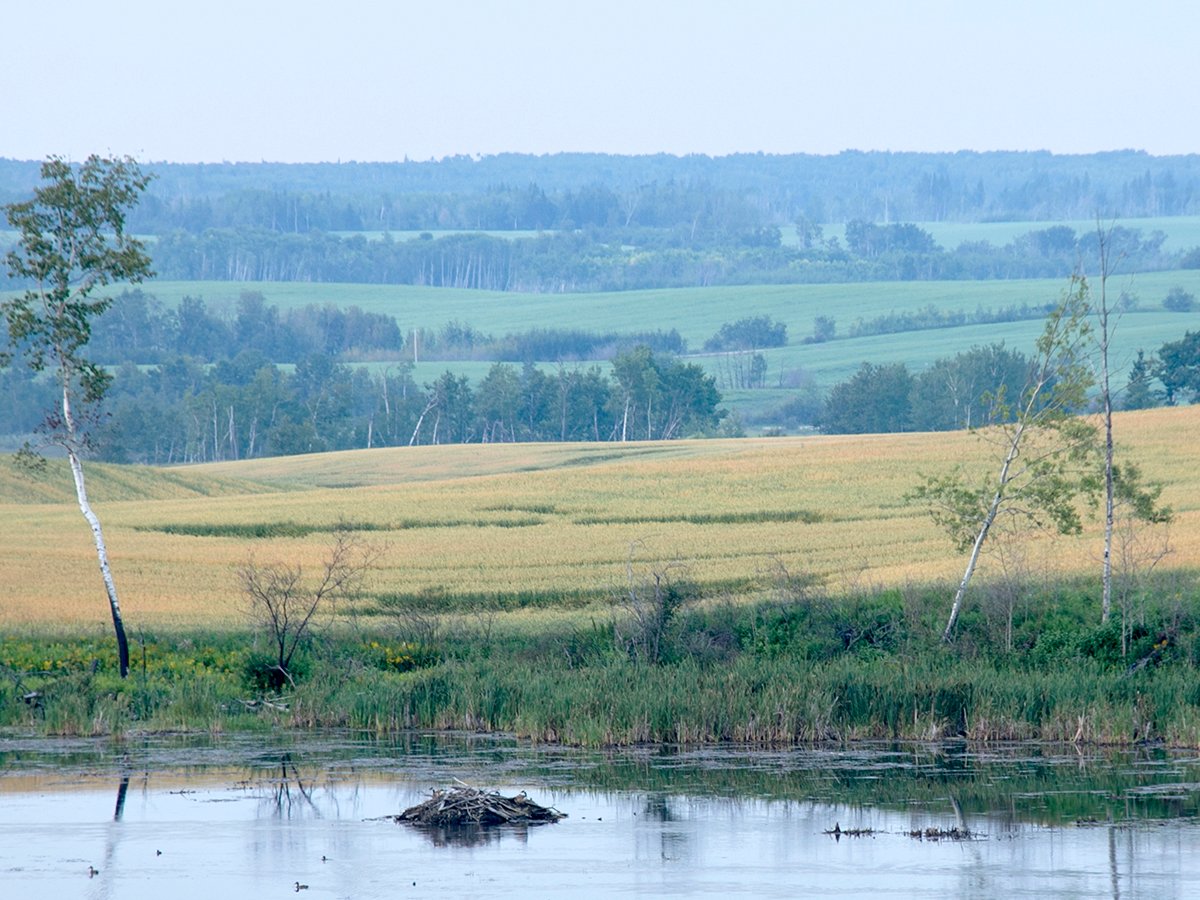Father’s Day brings back all the wonderful memories of fathers who are no longer with us.
To all our dads, Happy Father’s Day. Enjoy the day doing whatever you like to do.
As I write, the main concern in our part of the Prairies is the drought. The best father’s day gift would be a good rain. We have been farming for several years and most years wait anxiously for rain.
Beautiful hot dry days are only a source of agitation for those of us wishing for the opposite. We know it will come sometime, but maybe not in time to save this year’s crop. Once again, it is a time of wait and see.
Read Also

Intergenerational rollover rules can help succession plans
One of the most significant concerns in succession planning for farmers is the tax bill that can come with passing the farm to the next generation.
How is olive oil made?
For the best flavour, olives are picked ripe from the trees, not too green or too black. The olives are ground into a paste, which is centrifuged or put under pressure to remove the water from the oil contained in the paste.
Terms you might find on a label:
- 100 percent pure olive oil is often the lowest quality available in a retail store. Better grades would have virgin on the label.
The difference between virgin and extra virgin olive oil is in the acidity and taste. In most countries, virgin means it has less than two percent acidity while extra-virgin has less than 0.8% acidity. Extra-virgin is considered to have superior taste, as determined by olive oil tasters.
- First cold press suggests it was the first oil that came from the press and that no heat was used but it is not correct. The paste from cold regions is often heated slightly to get oil extracted from water. First also suggests there may be a second press but there is no second press.
- The label may indicate that the oil was bottled or packed in a specific country. The oil may not have been produced there but could be a mixture from more than one country.
In some recipes, you might want the olive oil taste or flavour. If not, canola oil is flavourless and may be a better choice, letting the other flavours in the recipe or dish take over.
We grow canola in Canada so by using it we support our own industry.
Health wise, the two oils are similar. Studies suggest that fats with a higher proportion of monounsaturated fats and low in saturated fat are best for our heart health. Olive oil is made up of 75 percent monounsaturated fat while canola oil is 61 percent.
Canola oil wins on the saturated fat percentage with only seven percent saturated fat, compared to olive oil at 15 percent.
Pizza crust with mashed potatoes
Dear TEAM: Have you ever made pizza crust with a mashed potato crust? If so, I would like to make it instead of the usual dough type. – M.M., Farmington, B.C.
Dear M.M.:I tried the following recipe from pizzaware.com., adapted it a bit and thought it a good recipe. Hope you like it.
Potato-based pizza dough
This recipe is enough for two 12-inch(30 cm) pizzas.
8 oz. potatoes, before peeling 226 gm
(or 2/3 cup cooked and mashed) 150 mL
11/4 teaspoons traditional 6 mL
dry yeast
11/2 cups warm water 375 mL
(105 – 115 F/40 – 46 C)
1 teaspoon sugar 5 mL
3 cups all-purpose flour 750 mL
1 teaspoon salt 5 mL
About 20 minutes before you are ready to make the dough, peel the potatoes and boil them until tender, drain and mash or press through a ricer. Use the potatoes while they are still warm but not so hot as to kill the yeast. They should be about the same temperature as the yeast water.
Stir sugar into the warm water. Add the yeast and let sit for about 10 minutes to dissolve.
Add the flour, mashed potatoes and salt. Mix until the dough comes together and forms a ball. Knead the dough on a floured board for about 10 minutes, until the dough is velvety, firm and slightly sticky. You may want to keep adding a little flour to the board to prevent stickiness.
First rise: Place the dough in a lightly oiled bowl, cover and leave to rise until doubled, about 1½ hours.
Shaping and second rise: Divide the dough in half. On a lightly floured surface, shape each into a ball. Place each ball into a well-oiled pizza pan and stretch the dough toward the edges. Cover and let sit for 10 minutes, then stretch to the edges. Cover again and leave until doubled, about 45 minutes.
Baking: Preheat oven to 400 F (200 C). Add toppings of your choice to the dough. Bake for 20 to 25 minutes or until golden.
Pam’s pizza crust
Pam, our daughter-in-law, says her family likes this recipe.
2 cups whole wheat flour 500 mL
1 cup white flour 250 mL
1 tablespoon instant yeast 15 mL
1 tablespoon baking powder 15 mL
1 teaspoon sugar 5 mL
1/4 teaspoon salt 1 mL
3 tablespoons cooking oil 45 mL
1 1/4 cups warm water 310 mL
Measure first six ingredients in a large bowl. Stir. Mix oil and water together and add to the flour mixture. Mix well.
Divide dough in half. Turn out onto floured surface. Knead until smooth and elastic. Shape into a ball and let rise for 15 minutes.
Grease two 12-inch (30 cm) pizza pans. Roll and stretch the dough to fit the pans.
Bake for 10 minutes at 400 F (200 C).
Add your favourite pizza sauce, toppings and cheese.
Return to oven and bake at 400 F (200 C) for 15 to 20 minutes or until browned.
On the grill – potato skins
4 large potatoes
4 tablespoons olive or 60 mL
canola oil
seasonings to taste
Scrub potatoes. Cut them lengthwise into six wedges (like orange sections).
In a large bowl or bag, toss potato sections with the oil until they are well covered.
Spread potato wedges on a grill topper, skin side facing down. Sprinkle with the seasonings of your choice.
Grill at 400 F to 450 F (200 C to 230 C) for 20 to 30 minutes, or until potatoes are fork tender.
Source: Potato Growers of Alberta
Cheese-topped pepper wedges
3/4 cup spreadable cream 175 mL
cheese
2 tablespoons chopped pitted 25 mL
black olives
2 tablespoons finely chopped 25 mL
green onion
1/8 teaspoon cayenne pepper 0.5 mL
1 green bell pepper
1 red bell pepper
1 yellow bell pepper
1/3 cup shredded cheddar 75 mL
cheese
Combine cream cheese, olives, green onion and cayenne pepper until blended, set aside. Cut bell peppers in half lengthwise, remove seeds and ribs. Cut each half lengthwise into four wedges. Spread cream cheese mixture evenly over inside of pepper wedges. Sprinkle cheddar cheese on top.
Place pepper wedges, cheese side up, on a grill topper. Grill peppers, with lid down, over low heat on natural gas barbecue for five to seven minutes or until peppers are heated through and cheese is melted.
Note: I liked them cooked longer, 15 to 20 minutes. Makes 24.
Source: ATCO Blue Flame Kitchen Hall of Flame, 2007.
Basting food on the barbecue
The high sugar content in glazes, basting sauces or marinades will burn easily, so it is best to brush them on during the last 10 to 15 minutes of grilling.
Alma Copeland is a home economist from Elrose, Sask., and one of four columnists comprising Team Resources. Send correspondence in care of this newspaper, Box 2500, Saskatoon, Sask., S7K 2C4 or contact them at team@producer.com.














